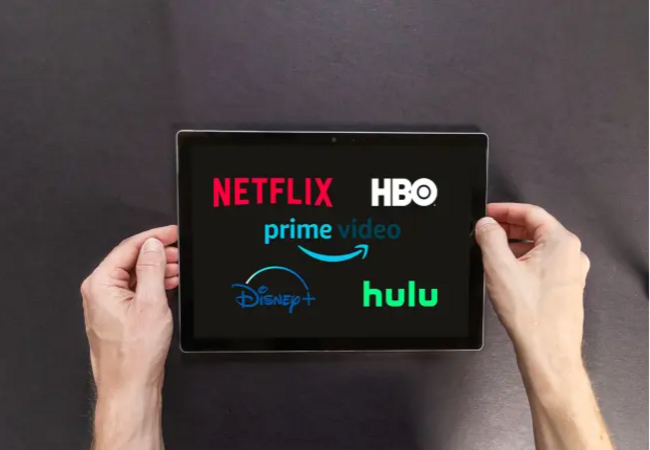Streaming services are revolutionizing how people listen to music. They allow consumers to access a vast catalog of songs, discover new artists, and create playlists based on their preferences. While streaming has gained popularity, radio remains a viable marketing channel. Learn how to leverage both traditional and streaming audio for your business.
Streaming Services Are More Efficient
Streaming services like
LoopTV are designed with commercial business locations in mind so that users can create customized music playlists for different zones within their businesses. This feature makes it easier to implement nuanced psychological research into the tempo; mode, and genre of background music that affects customer behavior and employee productivity. Unlike traditional radio, which can take minutes to start up due to a loading time and login screen, streaming services are instantaneous with the push of a button or flick of the dial. This instant accessibility appeals to customers and employees and keeps them coming back. Another aspect of streaming services that attract consumers is their affordability, which appeals to Gen Z. For a monthly subscription, they have access to millions of songs. They can curate their playlists for any mood or occasion. In addition, commercial streaming services cover the licensing fees for composers and musicians; to ensure they are adequately compensated for their work. Compared to terrestrial radio, streaming services also pay higher rates to artists on a per-listener basis. Some argue that streaming services are stealing listeners from radio; but it still needs to be clarified that this is the case. Radio and streaming audio can complement each other and be mutually beneficial in helping brands accomplish their marketing goals. Radio provides national reach, and streaming allows for precisely targeting local audiences.
Streaming Services Are More Convenient
Streaming services give users access to a vast music and audio content library through apps and web browsers. This lets users listen at home or on the go and can be easily incorporated into any digital device, including smart TVs. Streaming services often feature podcasts and other audio content curated to appeal to specific audiences. Using algorithms, streaming services curate personalized content recommendations to keep users engaged and interested. This personalization reflects the desire of many consumers to have more control over their listening experience, especially regarding business music. This can be a huge draw for businesses looking to connect with specific demographics and boost engagement by increasing the relevance of advertising messages. Regarding cost, streaming services are more affordable than traditional radio for most consumers. With the ability to choose between subscription models and ad-based options; Can offer more flexibility in pricing than conventional radio stations. In addition, streaming services can be accessed on multiple devices; with many platforms offering voice-activated assistants like Amazon’s Alexa and Google Assistant. This is a significant factor in their popularity with Gen Z, who tend to favor mobile and digital-first experiences. This convenience allows users to quickly access the content they want without having to search for a station or track and skip through advertisements on traditional radio.
Streaming Services Are More Personalized
Gen Z loves technology, and streaming services allow them a sizable music collection to play whenever possible. Streaming is also an excellent way for them to explore new music and find their favorite artists. In fact, according to a 2022 report from Musically, Have replaced music ownership as the most popular method of listening to music. As a result, traditional radio has struggled to compete. Radio promotion accounted for a significant percentage of central label budgets in the past, but now it is being reduced by many stations and networks. As a result, thousands of people have been laid off by companies. Despite these challenges, radio remains the most popular source of audio programming. Its reach is unparalleled,
simultaneously delivering messages to millions of listeners. This makes it a fantastic business channel to set their brand vibe, increase sales, and improve productivity. Unlike Spotify and Pandora, which are primarily music-based, traditional radio can provide its audience with local banter and “talk” interspersed with their playlists. This makes it more personalized to listeners, a critical factor in driving engagement and conversion. In addition, radio ads are usually unskippable, which ensures that your business’s message is heard.
Streaming Services Are More Effective
Streaming services have made radio more effective by providing new opportunities for advertisers. These platforms have allowed brands to reach their target audiences by leveraging user data to deliver more relevant and personalized content. This can increase engagement, which is critical in the conversion process. In addition, streaming services offer more metrics than traditional radio that can help marketers understand their campaigns and make adjustments based on their results. For example, they can track the number of times an ad is played, its audio completion rate, and the number of clicks it receives. This information allows businesses to optimize their campaigns and increase the likelihood of receiving a
positive ROI. While some artists complain about the rates streaming services pay them, they must remember that these platforms pay them higher revenue per listener than traditional radio. Pay more to record labels than physical music sales do. If you’re ready to improve your business by delivering a more effective soundtrack, consider using a B2B music curation platform like Moodby Play, Soundtrack Your Brand, TouchTunes, or Cloud Cover Music. These solutions will cover all licensing and provide your establishment with a customized music library explicitly curated for your business. You can set your brand’s vibe, drive sales, and boost productivity.

